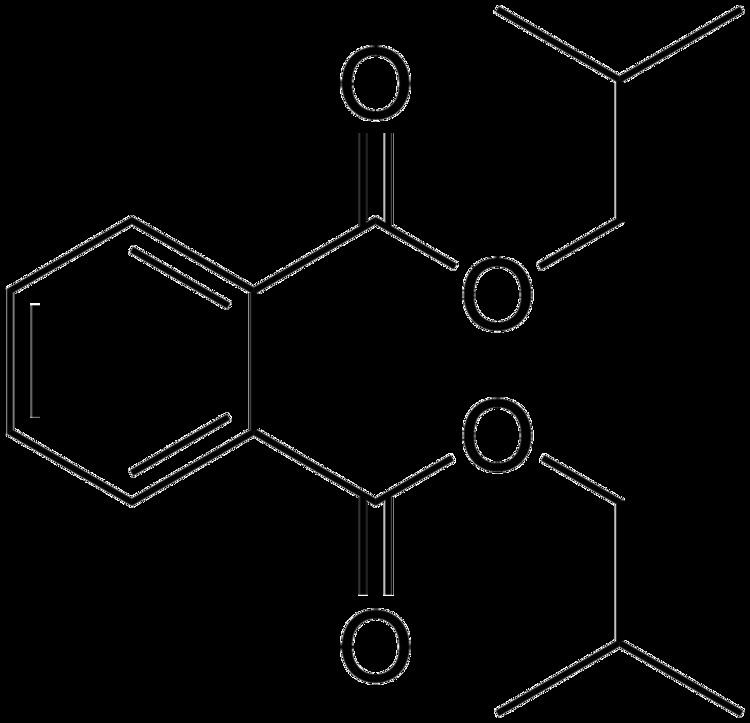Formula C16H22O4 Density 1.04 g/cm³ Melting point -37 °C | Molar mass 278.35 g/mol Boiling point 320 °C Appearance Colorless viscous liquid | |
 | ||
Diisobutyl Phthalate (DIBP) is prepared by esterification process of isobutanol and phthalic anhydride. Its structural formula is C6H4(COOCH2CH(CH3)2)2. Refractive index is 1.488 - 1.492 (20 °C, D).
DIBP is an odorless plasticizer and has excellent heat and light stability. It is the lowest cost plasticizer for cellulose nitrate. DIBP has lower density and freezing point than DBP (dibutyl phthalate, CAS No.: 84-74-2). It has similar properties as dibutyl phthalate and can be used as a substitute for it.
The concentration of a metabolite of DIBP (Mono-isobutyl phthalate or MIBP) has been steadily increasing in the urine of Americans over the period 1999-2008. Prenatal maternal exposure is associated with substantial harm to intellectual development in children.
Contamination
Products in Taiwan made from Hebo Natural Products Limited (禾博天然產物有限公司) of China contained ginger contaminated with DIBP, some 80,000 nutritional supplement capsules made with imported ginger powder were seized by the Public Health Department of Taiwan in June 2011. In addition, soybean extract and olive leaf extract, both in powder form, were contaminated with DIBP and DBP. Concentration of DIBP in the ginger extract powder was found to be 33,100 parts per million (ppm), that of DIBP in the soybean extract powder, 41 ppm, and that of DIBP and DBP in the olive leaf extract powder, 768 ppm and 441 ppm, respectively.
